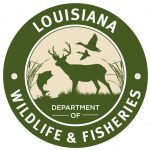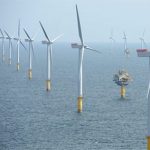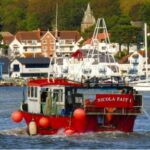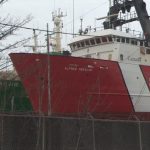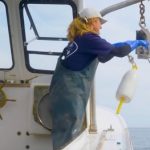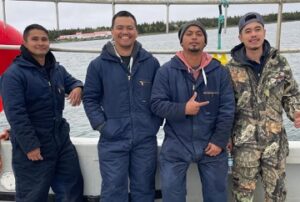Daily Archives: November 24, 2016
A father and son in St. Bernard Parish have a lot to be thankful for this Thanksgiving
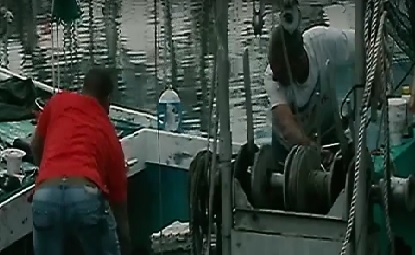 They said they almost died after their shrimp boat sank. After being stranded for hours, they were rescued by the U.S. Coast Guard when another boater called for help. WDSU obtained video shot by the Coast Guard of the moment Daniel Scott and his stepfather, Joseph Mitchell, were rescued on Lake Borgne in Hopedale Saturday. “I broke down night before last after we got home,” Mitchell said. “I cried and I cried thinking about losing my son’s life.” The two were out shrimping. Winds picked up, the waves started crashing and the boat started sinking. “In a matter of seconds, Jo, my stepdad said, ‘Grab the life preservers,’ which we did,” Scott said. “I climbed out the window pulled him out the window. By that time the boat was under and we climbed up and hung out for about five hours and realized there is nobody out there to help us.” Video, read the story here 17:23
They said they almost died after their shrimp boat sank. After being stranded for hours, they were rescued by the U.S. Coast Guard when another boater called for help. WDSU obtained video shot by the Coast Guard of the moment Daniel Scott and his stepfather, Joseph Mitchell, were rescued on Lake Borgne in Hopedale Saturday. “I broke down night before last after we got home,” Mitchell said. “I cried and I cried thinking about losing my son’s life.” The two were out shrimping. Winds picked up, the waves started crashing and the boat started sinking. “In a matter of seconds, Jo, my stepdad said, ‘Grab the life preservers,’ which we did,” Scott said. “I climbed out the window pulled him out the window. By that time the boat was under and we climbed up and hung out for about five hours and realized there is nobody out there to help us.” Video, read the story here 17:23
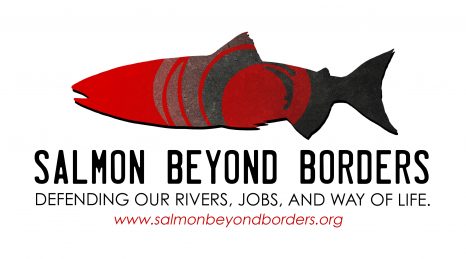
Southeast rivers are economic gold mine
An economic study commissioned by Salmon Beyond Borders concludes that transboundary watersheds facing potential adverse impact from British Columbia mines are valued at just under $1 million, when considering a 30-year horizon. The study by the McDowell Group, a Juneau research and consulting firm, measures the economic impact of the Taku, Stikine and Unuk river watersheds on the Southeast Alaska economy. The study found that, combined, these watersheds account for $48 million in direct spending, 400 jobs for the Southeast region and nearly $20 million in labor income. The study, released in late November, also estimated the exvessel value and first wholesale value of Mass and Skeena River sockeye salmon caught commercially as $620,000 and over $1.3 million respectively. Salmon Beyond Borders is a campaign driven by sport and commercial fish harvesters, community leaders, tourism and recreation business owners and concerned citizens, in collaboration with tribes and First Nations on both sides of the international border. Read the story here 12:44
Letter: We’ve seen the future, and it’s land-based – John McCarthy
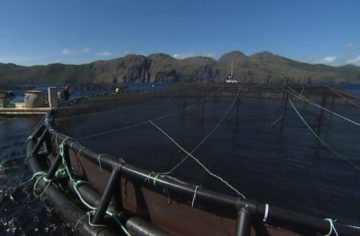 I write in response to a letter written by Leon Fiander from Marystown on Oct. 18, “Will Placentia Bay aquaculture affect native salmon?” Our group, Salmon Preservation Association for the Waters of Newfoundland (SPAWN), has met with Environment Minister Perry Trimper and provincial officials, executive director Mark Lane and other officials of the Newfoundland Aquaculture Industry Association, Gudie Hutchings, MP for Long Range Mountains, and others. We have tried to establish exactly what is being proposed for aquaculture in Placentia Bay. We have a good track record of meeting and working with industry to mitigate potential environmental issues and have worked out of the public eye with Kruger and other industries successfully over the years. We continue to correspond with Mark Lane regarding the interaction between aquaculture and our environment. Fiander’s letter appears to us to be more like a job application than an actual letter of approval for Placentia Bay sea-cage aquaculture. Read the rest here 12:08
I write in response to a letter written by Leon Fiander from Marystown on Oct. 18, “Will Placentia Bay aquaculture affect native salmon?” Our group, Salmon Preservation Association for the Waters of Newfoundland (SPAWN), has met with Environment Minister Perry Trimper and provincial officials, executive director Mark Lane and other officials of the Newfoundland Aquaculture Industry Association, Gudie Hutchings, MP for Long Range Mountains, and others. We have tried to establish exactly what is being proposed for aquaculture in Placentia Bay. We have a good track record of meeting and working with industry to mitigate potential environmental issues and have worked out of the public eye with Kruger and other industries successfully over the years. We continue to correspond with Mark Lane regarding the interaction between aquaculture and our environment. Fiander’s letter appears to us to be more like a job application than an actual letter of approval for Placentia Bay sea-cage aquaculture. Read the rest here 12:08
Queensland’s trawling industry under threat over low scallop numbers
 Scallop fishers have been told the Federal Government may step in and restrict fishing and exports for the entire trawling industry in Queensland if stock numbers do not dramatically improve. The warning came at a meeting at Bundaberg, which was the culmination of two days worth of talks between industry and the State Government about the dire state of the scallop stock. Fisheries Minister Bill Byrne announced last week he would close stock replenishment areas (SRAs) and introduce a winter spawning closure, in the wake of a stock assessment that put the biomass level at 6 per cent of 1977 levels. But emotional, frustrated and at times hostile fishermen and processors disputed the assessment. The industry has questioned how a fishery that had been managed for decades could end up in this position. Stephen Murphy, from Hervey Bay Cold Stores, said the fishing industry should not bear all the blame for the situation, saying climate and environmental issues also played a part. “Especially things like the Gladstone dredging. As soon as they started that dredging for the LNG project, they dumped millions and millions of tonnes of spoil from that harbour on to pretty well the best scallop grounds in Queensland,” he said. Read the article here 11:18
Scallop fishers have been told the Federal Government may step in and restrict fishing and exports for the entire trawling industry in Queensland if stock numbers do not dramatically improve. The warning came at a meeting at Bundaberg, which was the culmination of two days worth of talks between industry and the State Government about the dire state of the scallop stock. Fisheries Minister Bill Byrne announced last week he would close stock replenishment areas (SRAs) and introduce a winter spawning closure, in the wake of a stock assessment that put the biomass level at 6 per cent of 1977 levels. But emotional, frustrated and at times hostile fishermen and processors disputed the assessment. The industry has questioned how a fishery that had been managed for decades could end up in this position. Stephen Murphy, from Hervey Bay Cold Stores, said the fishing industry should not bear all the blame for the situation, saying climate and environmental issues also played a part. “Especially things like the Gladstone dredging. As soon as they started that dredging for the LNG project, they dumped millions and millions of tonnes of spoil from that harbour on to pretty well the best scallop grounds in Queensland,” he said. Read the article here 11:18
Sometimes the opening of lobster fishing off southwestern Nova Scotia goes off without a hitch. And sometimes not.
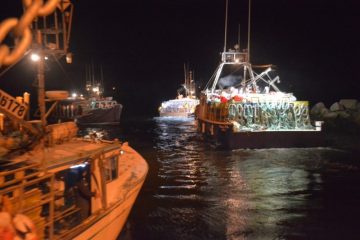 In the present day, there are 979 licences in Lobster Fishing Area (LFA) 34, which is slated to see its season start with Dumping Day on Monday, Nov. 28. The neighbouring LFA 33 along the province’s south shore also opens the same day. As fishermen gear up for the start of another lobster season, he’s a look back at some season starts of years gone by. 2015: Good start, good price Last year’s lobster season got off to a good start with decent opening day weather and better yet, a better price than in previous years. Fishermen were being paid around $6 a pound for their landings. 2014: Six-day weather delay,,, Read the rest here 10:05
In the present day, there are 979 licences in Lobster Fishing Area (LFA) 34, which is slated to see its season start with Dumping Day on Monday, Nov. 28. The neighbouring LFA 33 along the province’s south shore also opens the same day. As fishermen gear up for the start of another lobster season, he’s a look back at some season starts of years gone by. 2015: Good start, good price Last year’s lobster season got off to a good start with decent opening day weather and better yet, a better price than in previous years. Fishermen were being paid around $6 a pound for their landings. 2014: Six-day weather delay,,, Read the rest here 10:05
Baltimore Canyon Urban National Marine Sanctuary process will go forward
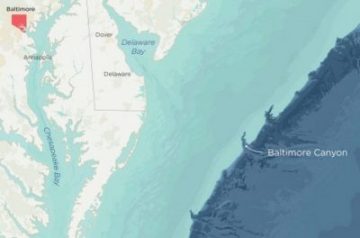 A month ago, the National Aquarium launched a petition to establish the 28-mile long underwater rift as its first Urban National Marine Sanctuary. The designation would help protect the rare deep-sea coral and ecosystem in the Baltimore Canyon by restricting offshore exploration for minerals, oil and gas. Since the canyon is one of the cornerstones of Ocean City’s fishing industry and, hence, its tourism market, sports fishing advocates have been pushing back on the designation. That culminated in a two-hour forum last week. Charter boat captain Franky Pettolina, the Ocean City Marlin Club president, saw the summit as a symbol of goodwill, but thought that the marine community argued in vain. Under the National Marine Sanctuaries Act, any action that removes, injures or damages any sanctuary resource, fish included, are prohibited. National Aquarium Director of Conservation Laura Bankey, who attended the meeting, said people will still be able to fish if the Baltimore Canyon is made a marine sanctuary. “Unlike land conservation areas, everything is allowed to continue until it is closed off [in a marine sanctuary],” Bankey said. “Sanctuaries are supposed to be multi-use areas. It’s our intention that recreation and commercial fisheries will be able to use these just like they do today.” Read the rest here 09:14
A month ago, the National Aquarium launched a petition to establish the 28-mile long underwater rift as its first Urban National Marine Sanctuary. The designation would help protect the rare deep-sea coral and ecosystem in the Baltimore Canyon by restricting offshore exploration for minerals, oil and gas. Since the canyon is one of the cornerstones of Ocean City’s fishing industry and, hence, its tourism market, sports fishing advocates have been pushing back on the designation. That culminated in a two-hour forum last week. Charter boat captain Franky Pettolina, the Ocean City Marlin Club president, saw the summit as a symbol of goodwill, but thought that the marine community argued in vain. Under the National Marine Sanctuaries Act, any action that removes, injures or damages any sanctuary resource, fish included, are prohibited. National Aquarium Director of Conservation Laura Bankey, who attended the meeting, said people will still be able to fish if the Baltimore Canyon is made a marine sanctuary. “Unlike land conservation areas, everything is allowed to continue until it is closed off [in a marine sanctuary],” Bankey said. “Sanctuaries are supposed to be multi-use areas. It’s our intention that recreation and commercial fisheries will be able to use these just like they do today.” Read the rest here 09:14

Happy Thanksgiving
Thanksgiving For each new morning with its light, For rest and shelter of the night, For health and food, For love and friends, For everything Thy goodness sends. – Ralph Waldo Emerson (1803-1882)

































